To make a perfect espresso, you need the right skills and equipment. But don't worry, we will guide you on how to use an espresso machine to brew the perfect espresso.
You can brew espresso from pre-ground coffee or visit a nearby cafe to get a quick espresso. However, brewing your own espresso at home provides a much more enjoyable coffee experience.
Brewing a great espresso, though, is not an easy task. Therefore, the following suggestions will help you avoid most of the pitfalls in your home brewing process.
To brew a standard espresso (not considering whether it's good or bad, as everyone's taste differs), you will need the following equipment:
- An automatic espresso machine
- A coffee grinder (if not integrated into the machine)
- A coffee tamper
- Coffee beans
- A scale (optional)
- A thermometer to measure milk temperature
- A milk frother (if not integrated into the machine)
How to Use an Espresso Machine in 6 Simple Steps
Step 1: Turn On and Preheat the Espresso Machine
To get the most out of your espresso machine, ensure that the entire machine is heated. This can take up to 25 minutes for some machines, so preheat it in advance!
Expert Tip: If you want to speed up this process, you can brew one shot of espresso without using coffee. This way, you can warm up the machine and your espresso cup simultaneously.
Step 2: Dosing and Grinding the Coffee
Set your coffee grinder to a fine grind setting. Don't worry too much about what "perfect" looks like at this point.
Place your portafilter on a scale and set the scale to zero, then grind around 20 grams of coffee into the coffee filter. It's essential to record the amount of coffee you use to maintain consistency during the adjustment phase.
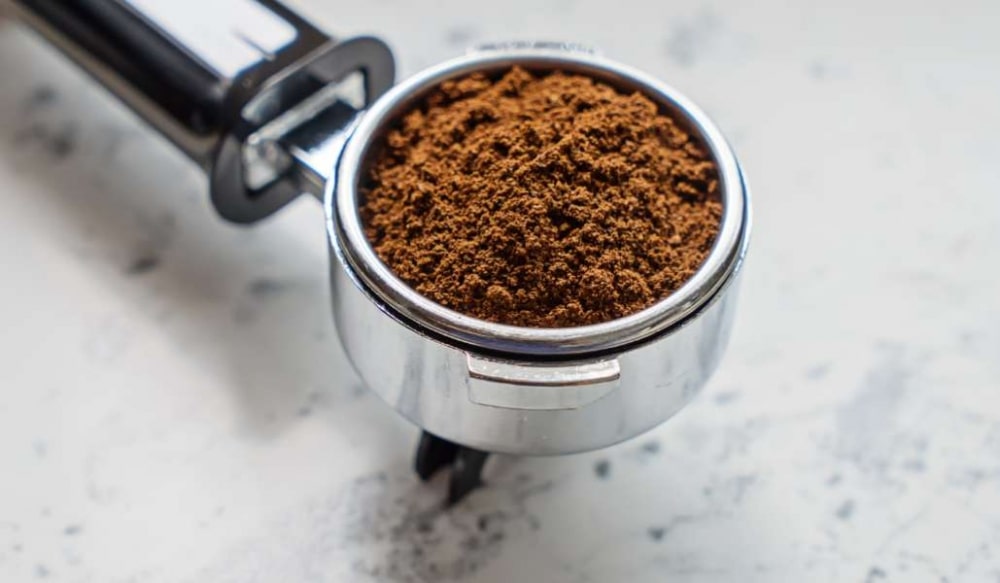
You should ideally have a small mound of coffee grounds in your filter basket. Use your hand to level off any excess coffee, push it into the gaps, and distribute it evenly, so you can proceed to the next step.
Step 3: Tamp the Coffee to Create a Flat, Even Surface
You want the coffee to be evenly distributed in the filter basket before tamping. This can be done by gently tapping the sides of the coffee filter by hand.
The key to good tamping is to press straight down – you don't want an uneven coffee puck, do you? A good rule to follow is to tamp until the coffee stops compressing, always ensuring you have a flat surface.
Then, sweep away any excess coffee that sticks to the top or sides of the coffee filter, and you're ready to brew!
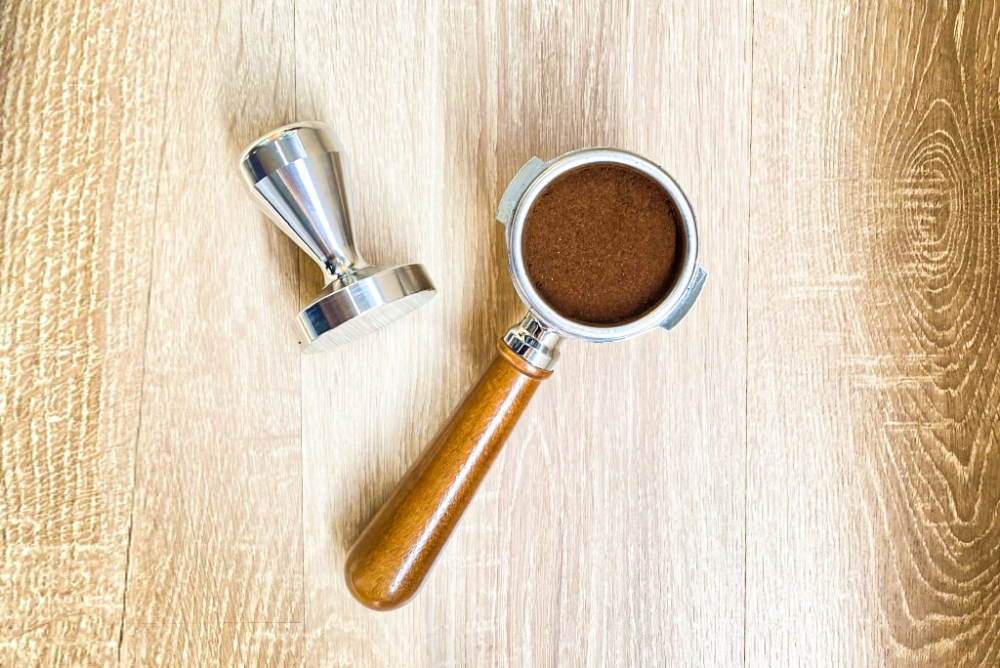
Expert Tip: Tamping coffee is like learning an art form, and you'll get better at it over time. Keep a journal and note the type of beans you're using and how you tamped (e.g., "Tamped down with about 50% pressure until coffee stopped compressing"). This will be useful when making adjustments later on. Choosing a hand-held coffee tamper instead of a regular tamper might be helpful for you as well and could enhance your espresso-making experience.
While extracting, time how long it takes to reach 60 ml of coffee (the standard double shot volume). Ideally, you'll complete this extraction in roughly 20-25 seconds.
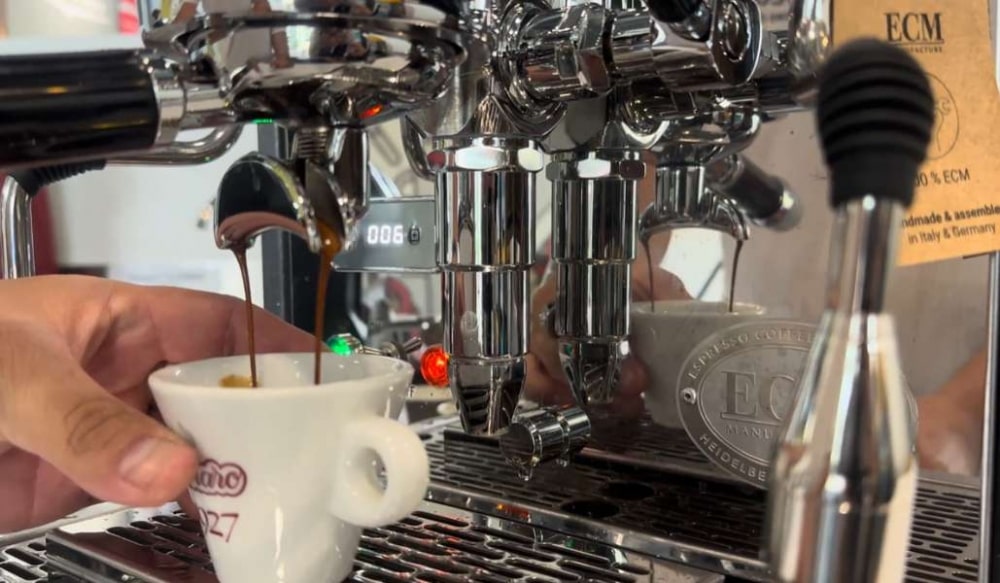
If you fall within this range, you've theoretically brewed an espresso. However, the first extraction serves as a baseline for you to make adjustments in subsequent extractions.
If your machine has a pressure gauge, take note of the achieved pressure. This will help you make adjustments in your next shot if the pressure is too high or too low. A good espresso machine will provide you with indicators of your extraction.
If you don't have a pressure gauge, observe the flow and taste of your espresso and make decisions accordingly. Record this in your journal. If your espresso pours too quickly, you'll want to adjust to a finer grind. Conversely, if it takes too long to pour, you'll want a coarser grind.
When you change the grind size, you should discard the coffee from the initial grind. This is because the coffee ground immediately after changing the grind size will consist of a mixture of uneven particle sizes, which is not suitable for extraction.
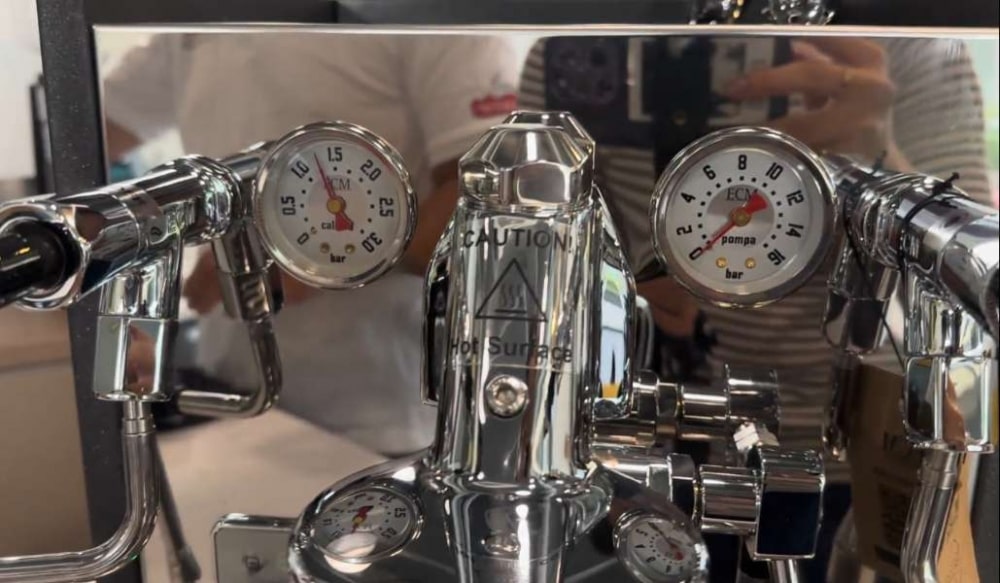
Finally, it's important to note that we don't measure taste in seconds. If your espresso tastes sour, it indicates that it's under-extracted, so you should grind finer. On the other hand, if your espresso tastes bitter, it means it's over-extracted, and in this case, you should adjust to a coarser grind.
If you switch between different coffee bean roasts, especially between light and dark roasts, you'll need to repeat this adjustment process. Dark roasted coffee is more prone to over-extraction, so it often benefits from a coarser grind.
At this stage, you decide whether you want to enjoy a black espresso like the Italians or turn it into a milk coffee. If the latter, continue reading for the milk steaming process.
Step 6: Steaming Milk
If you're looking to make a latte, macchiato, or cappuccino, the next step is to steam the milk. Hopefully, your machine has an integrated steam wand. If not, you'll need a separate milk frother.
Using the steam wand of the coffee machine, pour cold milk into a stainless steel milk frothing pitcher. Release the steam wand for about 2 seconds to clean it.
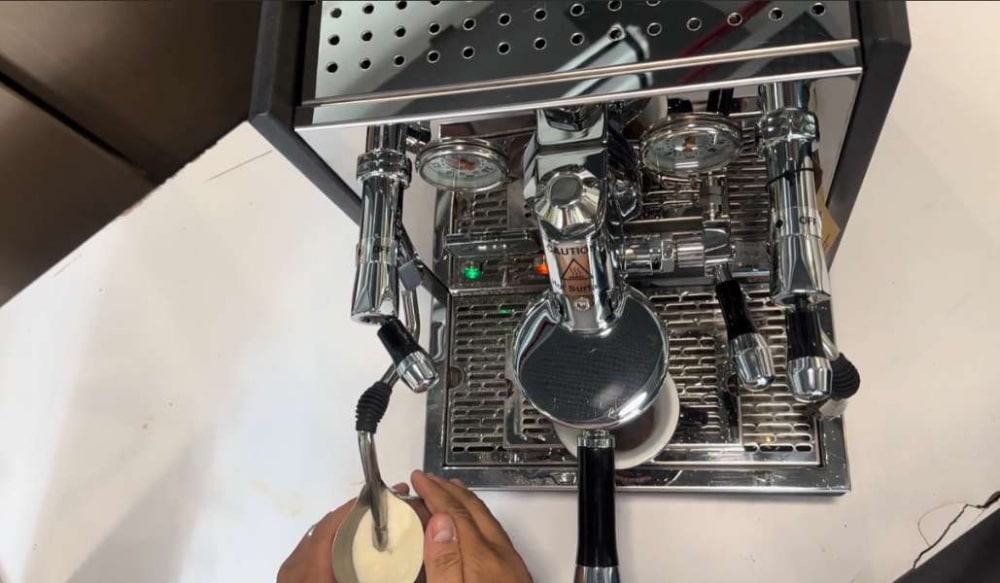
Next, position the steam wand's tip just below the surface of the milk. Turn on the steam wand and froth the milk until you achieve the desired level of foam. Be sure to keep the wand tip close to the surface during this process.
Once you've reached the desired milk froth, submerge the steam wand deep beneath the milk's surface and continue steaming until you reach the desired temperature. Then, wipe the steam wand clean and give it a quick burst of steam to ensure cleanliness.
The recommended temperature for frothing milk is between 55-65°C (139-149°F). At this range, all the fats in the milk have been liquefied and won't ruin the foam.
The key to achieving perfect milk foam is temperature. Too low, and your foam won't hold, too high, and your milk will have a burnt taste. So, practice, practice, practice, and you'll get the hang of it!
In Summary
Rich, creamy, and full of flavor, there's nothing quite like espresso. Bring patience and a willingness to learn to your espresso-making adventure, and you'll master it in no time. Once you've perfected your espresso extraction, other coffee brewing methods will become much more straightforward. Enjoy your coffee journey!
VINBARISTA - ALL YOUR COFFEE NEEDS
Trang thương mại điện tử thuộc Cubes Asia
- Tư vấn mua hàng: 0909 244 388
- Fanpage: Vinbarista - máy pha cafe & cafe
- Website: https://vinbarista.com/
Địa chỉ cửa hàng:
